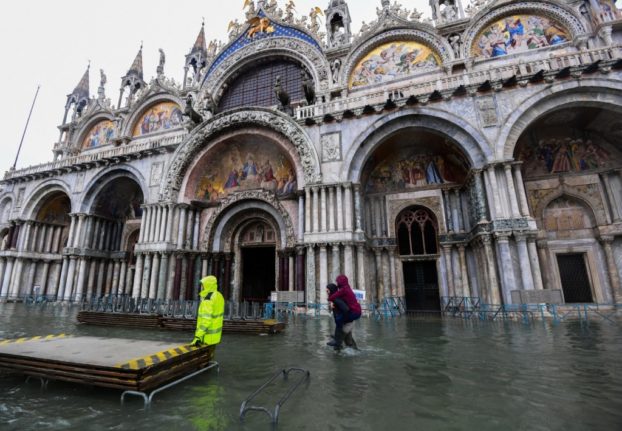After heavy rain following another spell of drought resulted in deadly flooding in northern Italy last week, Agriculture Minister Francesco Lollobrigida said Italy must adapt its infrastructure to cope with the changing climate – but said CO2-reduction measures would be too damaging to Italian industry.
Lollobrigida told news agency Reuters Italy needed to build more reservoirs to hold water reserves, urgently patch up leaky pipelines, repair dams, and consider moving some types of crops away from increasingly arid areas.
“The drought is not a [one-off] emergency, it is linked to climate change,” said Lollobrigida, a senior member of the ruling, far-right Brothers of Italy party.
Italy suffered its most severe drought in 70 years in 2022, and a dry winter has raised fears that 2023 could be even worse.
“We must consume water better in agriculture, invest in research, use new drip irrigation methods and underground irrigation, and be organised to use every drop of water in the best way without any dispersion,” Lollobrigida told Reuters.
READ ALSO: Climate crisis: Italy records ‘five times’ more extreme weather events in ten years
He said leaky pipes were a major problem, with 41.2 percent of water lost from the national network on average before reaching the taps. By comparison, Germany had a water dispersion rate of 6.5 percent, the minister said.

Another solution would be to repair dozens of Italy’s nearly 530 dams that had fallen into disrepair, he said, estimating that 30 percent of the country’s dams were obstructed.
“We have a water catchment of just 11 percent and therefore we do not keep rainwater,” he said.
READ ALSO: No more ‘dolce vita’: How extreme weather could change Italian tourism forever
He added that precipitation had not radically decreased, but came in shorter, sharper bursts, as happened last week, when heavy rain caused severe flooding which left two people dead in the Emilia Romagna region.
Severe rainfall meant rivers in the region overflowed, causing damage to property and agriculture. About 450 people were evacuated from their homes.
The violent storms, far from bringing relief from the drought, worsened the situation as flood water damaged vineyards and farmland, according to the Coldiretti agricultural association.
Despite acknowledging that drought was caused by climate change, the minister reportedly brushed aside criticism that the government had sought to block EU efforts to cut carbon emissions.

In recent months, Italy has been pushing the European Union to weaken a directive aimed at improving the energy efficiency of buildings, and has questioned a push to reduce industrial emissions.
The Italian government has also pushed back against plans to phase out diesel and petrol cars by 2035, with ministers saying Italy is too far “behind” in the transition to electric vehicles to be able to meet this deadline.
“I think we need to be more pragmatic and less ideological,” Lollobrigida told Reuters, suggesting CO2-reduction measures such as those proposed at an EU level run the risk of turning Italian industry “into a desert”.
In April, the government appointed a commissioner to lead a drought task force of senior officials from various ministries.
The Italian government has not yet announced any concrete measures to tackle droughts and the other effects of the increasing number of extreme weather events hitting Italy.



 Please whitelist us to continue reading.
Please whitelist us to continue reading.
Member comments